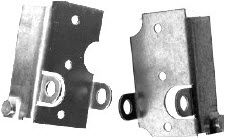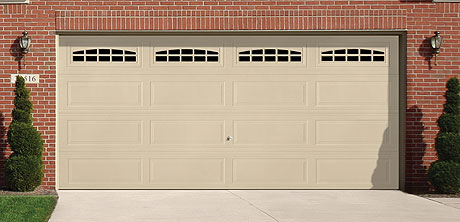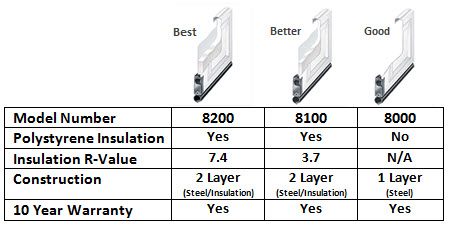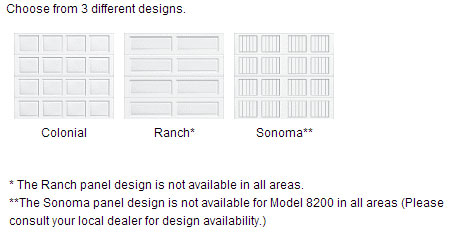Models 8000, 8100, and 8200 are Wayne Dalton’s basic, entry level steel garage doors. The Model 8000 is an uninsulated, single steel sheet door while the Models 8100 and 8200 are insulated with polystyrene insulation. The 8200 has an R-value* of 7.4 while the 8100 has an R-value of 3.7. The embossed panel designs and optional decorative windows add charm and appeal to your home. For those living in coastal areas or parts of the country with high wind requirements, the Models 8000 and 8100 are available with wind load reinforcement.
* Wayne Dalton uses a calculated door section R-value for our insulated doors.

2- Choose a Color
.

3- Choose a Window
Not all window options are available with every panel style.
Window options are not interchangeable between panel options. Check with us for details.
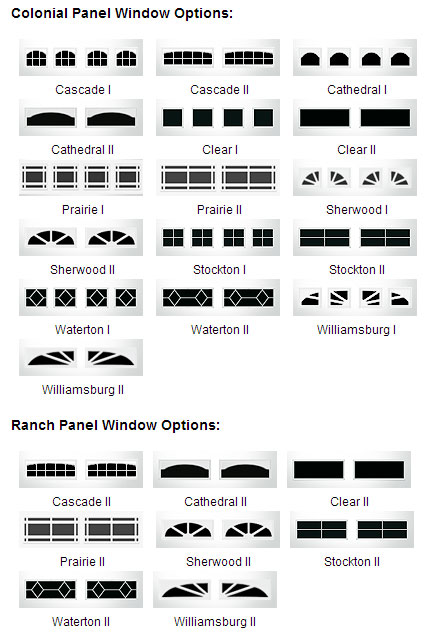
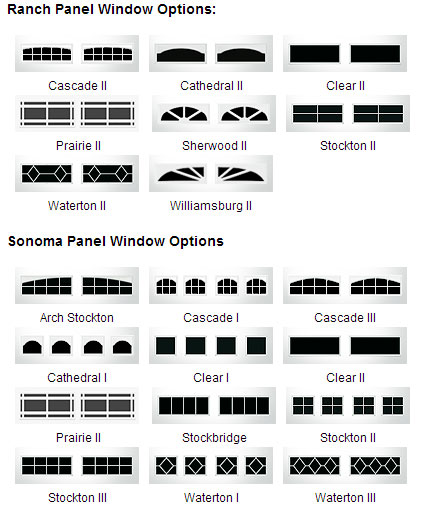
4- Choose your Hardware
Every piece of our garage door hardware is made from black powder coated steel with a hand-hammered look. Additional accent pieces are available to match or complement each collection.
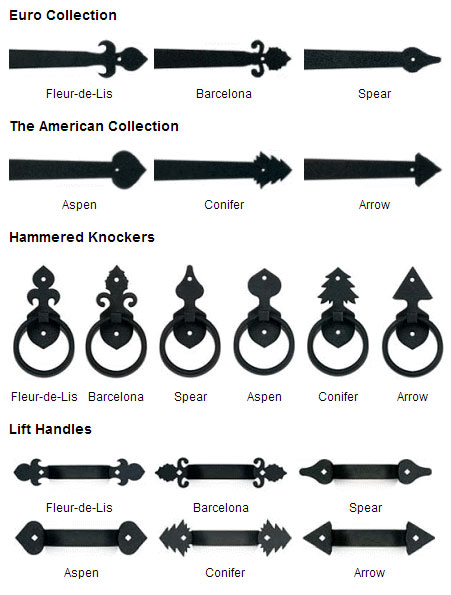
Garage Door Features

TorqueMaster® Counterbalance
TorqueMaster® Plus is Wayne Dalton’s exclusive counterbalance system that safely and cleanly contains the springs inside a steel tube. Having the springs contained in the metal tube looks much better than exposed springs and prevents the collection of dirt and grime on them. The TorqueMaster® Plus design helps prevent injury that could result from the accidental release of tension and includes an anti-drop safety device. If a spring should happen to break while the door is in the up position, the anti-drop device will stop the door from going into a free fall.
The Wayne Dalton residential garage doors that feature TorqueMaster®:
Carriage House Steel Garage Door Model 9700
Carriage House Steel Garage Door Model 9400
Classic Steel Garage Door Model 9100 / 9600
Classic Steel Garage Door Model 8000 / 8100 / 8200
Designer Fiberglass Garage Door Model 9800 (up to 8ft.)
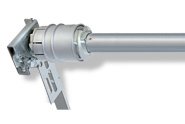
Polyurethane foamed-in-place insulation
Our most popular polyurethane foamed-in-place insulated doors have R-values ranging from 11 to 14.8. The doors are manufactured with polyurethane foamed-in-place insulation using a patented process. Polyurethane insulation delivers twice the thermal performance of polystyrene insulation of the same thickness! It also adds strength and rigidity to the door panels and helps dampen sound transmission.
The garage doors listed below have foamed-in-place polyurethane insulation:
foam insulated garage door
Carriage House Steel Garage Door Model 9700
Carriage House Steel Garage Door Model 9400
Classic Steel Garage Door Model 9100 / 9600
Classic Steel Garage Door Model 8300 / 8500
Designer Fiberglass Garage Door Model 9800 (up to 8ft.)
Specialty Vinyl Garage Door Model 8700
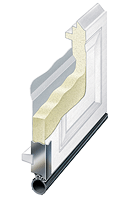
Expanded polystyrene insulation
Expanded polystyrene insulation offers thermal efficiency with an R-value between 3.7 and 7.4. Polystyrene insulation are rigid panels placed inside the door sections when they are manufactured.
The garage doors listed below have polystyrene insulation:
foam insulated garage door
Carriage House Steel Garage Door Model 8024/8124 PE
Classic Steel Garage Door Model 8024/8124/8224 PO
Classic Steel Garage Door Model 8000 / 8100 / 8200
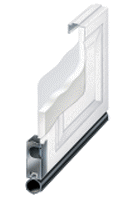
Garage Door Insulation
The amount of insulation you need in your garage door depends on your region. With the garage usually being the primary entrance to the home and with living space often above or beside it, it’s best to keep the temperature in the garage as comfortable as possible. This is especially true in very cold regions. You can choose garage doors with varying degrees of insulation to best suit your needs. The effectiveness of the insulation is expressed as an R-value*, which is its resistance to heat flow. The higher the R-value, the better the insulation in the door. For instance, Model 8300 and 8500 doors from Wayne Dalton offer high levels of insulation against extreme temperatures and have an R-value up to 14.8*. Many Wayne Dalton garage doors come with one of two types of insulation: polyurethane or polystyrene.
“R-values” have become familiar benchmarks for shoppers to compare the insulating ability of a wide range of home building products. That’s smart. But there are other things about garage door insulation that people should know. The type of insulation makes a difference. The two most common insulating materials are polyurethane and polystyrene. Polystyrene insulation is usually used in rigid sheets inserted into garage door cavities. Polyurethane is a foam that expands and bonds to surfaces when injected into the cavity. Inch for inch, polyurethane insulation is twice as effective as polystyrene.
Composite panels have structural properties. The polyurethane foam bonded to the steel section creates a composite structure with greater strength, more rigidity, improved dent-resistance and better thermal protection.
Insulating against neighborhood noise, too. The same properties that improve thermal efficiency, also give polyurethane insulation excellent acoustic properties. An insulated garage door can significantly reduce the intrusion of street noise into the home – especially important when there are bedroom or other living areas above or adjacent to the garage.
* Wayne Dalton uses a calculated door section R-value for our insulated doors.
Insulated Door Benefits
- Prevent Air Leakage
- Comfort
- Create a comfortable environment to work in the garage year-round.
- Better Resistance to Dents
- Noise Reduction
- Save Energy
Bottom weather seal
In addition to insulation, our doors have a bottom weather seal. The bottom weather seal blocks drafts and reduces air infiltration. It remains flexible even in extreme cold to keep the bad weather outside. All of our residential garage doors feature a bottom weather seal.
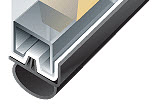
Tamper-Resistant Safety Bottom Brackets
Tamper-resistant safety bottom brackets help avoid possible injury by preventing inadvertent loosening when the counterbalance cables are still under tension.
